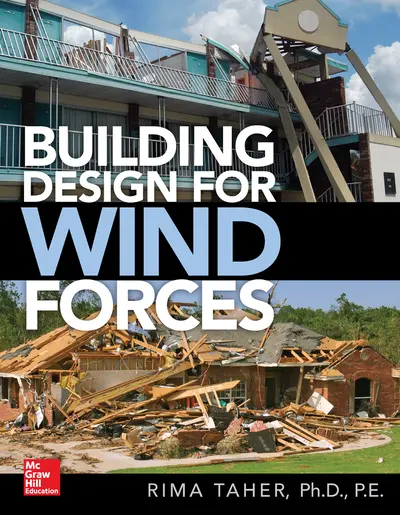My Account Details

ISBN10: 1259860809 | ISBN13: 9781259860805

Step 1 . Download Adobe Digital Editions to your PC or Mac desktop/laptop.
Step 2. Register and authorize your Adobe ID (optional). To access your eBook on multiple devices, first create an Adobe ID at account.adobe.com. Then, open Adobe Digital Editions, go to the Help menu, and select "Authorize Computer" to link your Adobe ID.
Step 3. Open Your eBook. Use Adobe Digital Editions to open the file. If the eBook doesn’t open, contact customer service for assistance.
Publisher's Note: Products purchased from Third Party sellers are not guaranteed by the publisher for quality, authenticity, or access to any online entitlements included with the product.
Expert coverage of ASCE 7-16–compliant, wind-resistant engineering methods for safer, sounder low-rise and standard multi-story buildings
Using the hands-on information contained in this comprehensive engineering guide you will be able to design and construct safer buildings that will better withstand extreme wind forces. Written by a recognized structural design expert, the book explains the general concepts and principles involved in the design of buildings and structures for wind forces. Structural systems used to resist wind forces are outlined and explained, in the context of both low-rise and high-rise buildings.
Building Design for Wind Forces provides easy-to-follow summaries of complex ASCE 7-16 wind load provisions and shows how to apply the corresponding design procedures using practical examples. A detailed discussion of typical structural damage caused by extreme wind events such as hurricanes and tornadoes is presented along with design recommendations. Current wind engineering activities and recent research developments are discussed, and a general overview of wind tunnel procedures and an introduction to the concept of database-assisted design (DAD) is provided.
Building Design for Wind Forces covers:
• Wind forces and wind effects on buildings and structures
• Wind load provisions of the ASCE 7-16 standard
• Damage to structures caused by extreme wind events
• Wind engineering activities and research trends
• Structural systems for lateral loads
• Tall buildings
• Wind design procedures and wind load parameters
• Wind loads on the Main Wind Force Resisting System (MWFRS)
• Wind loads on Components and Cladding (C&C)
• Wind loads on building appurtenances and other structures
• Wind tunnels and the wind tunnel procedure
• Database-assisted design (DAD)
Need support? We're here to help - Get real-world support and resources every step of the way.